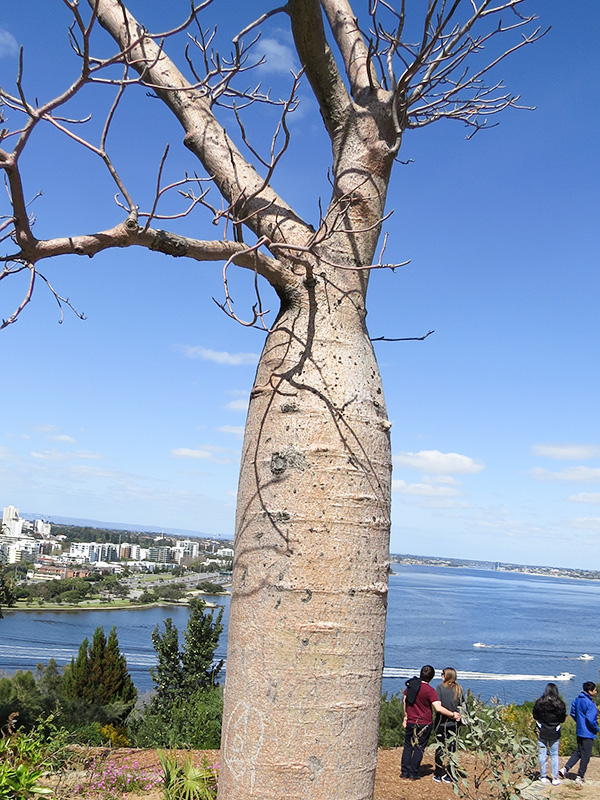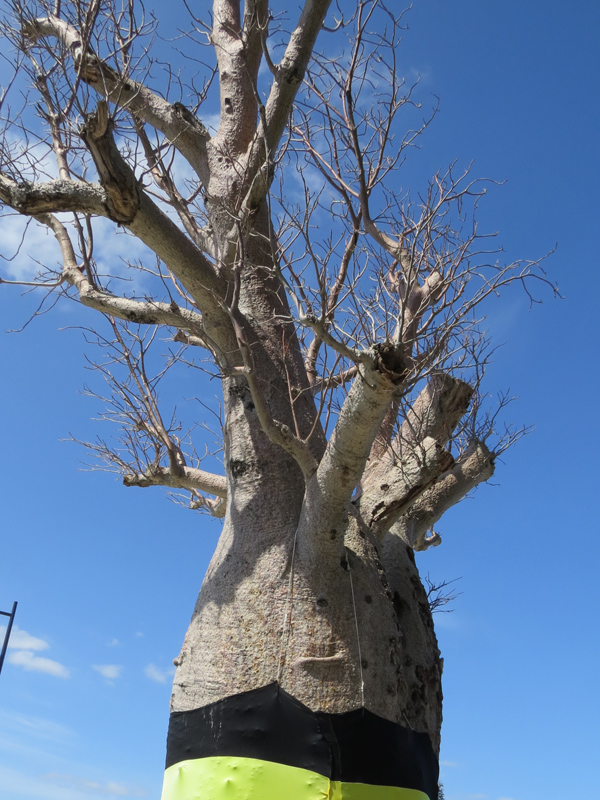
Tropicals, Woody > Adansonia > Adansonia gregorii > Adansonia gregorii
Adansonia gregorii
Australian Baobab, Boab Baobab, Sour Gourd, Sour-gourd Tree, Cream of Tartar Tree, Monkey Bread Tree, Upside Down Tree, Baobab, Babob Tree, Gouty Stem Tree, Bottle Tree, Dead Rat Tree, Gadawon
Origin: Australia.
| Family |
| Malvaceae |
| Genus |
| Adansonia |
| Species |
| gregorii |
| Category |
| Tropicals, Woody |
| Type |
| Tree (deciduous) |
| Synonyms |
| Baobabus gregorii, Gossampinus heptaphylla, Baobab gregorii, Adansonia stanburyana, Bombax ceiba var. ceiba, Adansonia gregorii f. globosa |
| Canadian Hardiness Zone |
| Cool season protection under glass. |
| Temperature (°C) |
| 13 - 39 |
| Height |
| 5 - 12 |
| Spread |
| 15 - 16 m |
Photographs
Description and Growing Information
Flowering Period
| Growth |
| Slow |
| Habitat |
| Found from sea level to 400 m. Open forests, monsoon forests and rocky areas. |
| Bark/Stem Description |
| Trunk is bottle shaped. |
| Leaf Description |
| The leaf blades are 6.5 - 12 in length, 2.5 - 4.5 cm wide are sessile and short stalked. The leaflet base is attenuate, apex acuminate with 5 - 8 leaflets comprising each compound leaf. The midrib is raised on the upper surface of the leaflet. The stipules are narrow, triangular and 5 mm in length. Terminating in a fine point. The terminal buds and young shoots are tomentose. Leafless for a period from July to October. |
| Flower Description |
| The flowers are quite large and open at night. They calyx is 6 cm long with spathulate petals which are 12 cm in length. |
| Fruit Description |
| The fruit is globular to ellipsoid in shape, 10 cm long and 4 cm wide. The seeds are reniform, 10 mm in length and 8 mm wide and are surrounded by a mealy, acidulous and edible pulp. |
| Colour Description |
| The bark is grey. |
| Texture Description |
| The bark is smooth. The fruit has a velvety texture. |
| Propagation |
| Seed, sown in October and will germinate in about 3 weeks. Plant in pots. Must be grown to 1 m in height before transplanting to their final location. |
| Ethnobotanical Uses (Disclaimer) |
| Root fibres are made into string. The fruit is edible and the seeds are ground into a paste. The wood has been used for boxes. The tap root is edible and can be used in the production of red dye. The seeds produce an edible oil. Medicinally the leaves can be used for gastrointestinal upset and rickets or as an ingredient in cosmetics. The pollen is used in the production of glue. |

